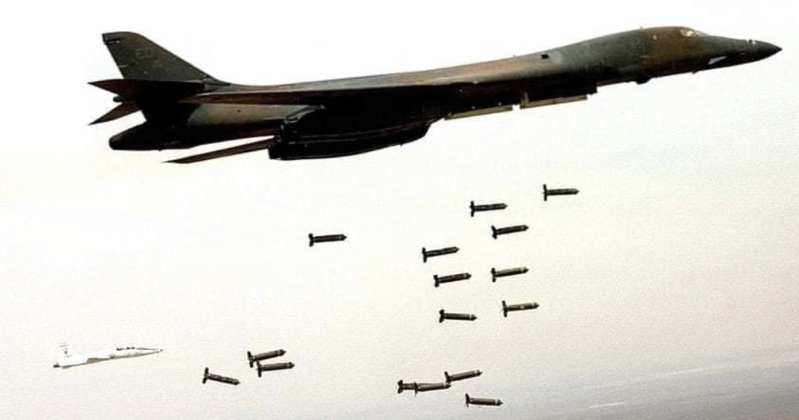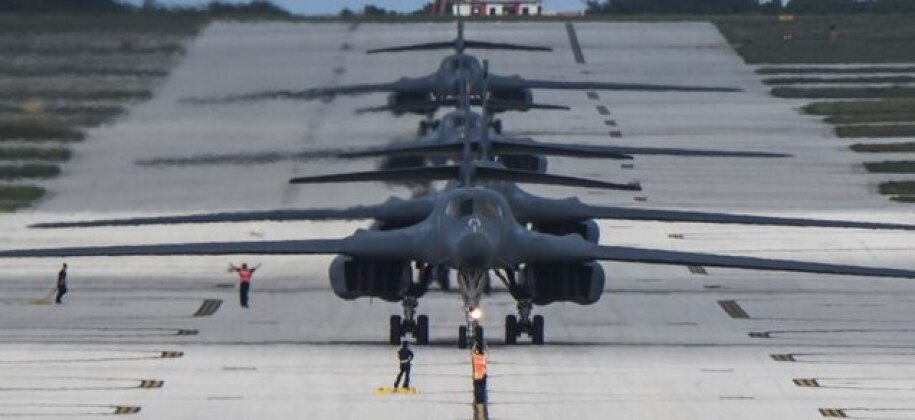November 2022 marks five years since a long standoff between the United States and North Korea brought the two powers to the brink of open hostilities, after they had been technically at war but restrained from escalation under an armistice agreement since 1953. At the time in late 2017 the Donald Trump administration came close to launching mass nuclear strikes to halt North Korea’s development of long range ballistic missiles and nuclear weapons, and likely dismantle its government and ruling party entirely. North Korea successfully tested its first intercontinental range ballistic missile capable of reaching the U.S. mainland on July 4, 2017, but it would be some months before U.S. intelligence agencies would publicly conclude that the country was fully capable of delivering nuclear strikes to American cities – a period in which military action continued to be very actively considered in Washington. As one of multiple assets deployed to place pressure on Pyongyang, B-1B Lancer intercontinental range strategic bombers were deployed to repeatedly simulate attacks on the country very close to its borders from October 2017. This was seen to have raised tensions considerably and led analysts to widely question how capable North Korea would be of shooting down the aircraft should an actual attack materialise.

Shortly before increasingly its bomber presence around Korea, and in a move interpreted by many analysts as a step towards preparing for war with North Korea, the U.S. Military redeployed 816,393 bombs (1.5 million pounds of ordinance) to Andersen Air Base on Guam – the main base of operations for American strategic bombers operating in East Asia. North Korea had tested several ballistic missile classes capable of striking Guam over the past two years, which was later seen to contribute to the U.S. Air Force’s decision to spread its assets out more widely to other facilities such as those on Wake Island. Andersen Air Force Base nevertheless played a key role in the 2017 standoff particularly as it was where B-1Bs, later followed by B-2s and B-52s, operated from. As part of their frequent shows of force, B-1Bs often operated very near North Korea’s borders carrying out mock missile launches off both Korean coasts while being escorted during parts of their flight by South Korean and Japanese fighters.

What made the B-1B appear particularly dangerous was the ambiguity regarding whether or not it could employ nuclear weapons, with the U.S. Strategic Command publishing a statement on Twitter November 16 warning that the U.S. retained “secret silos” of nuclear weapons in South Korea, and that B-1B bombers, which were supposedly denuclearised after the Cold War retained the ability to carry out nuclear strikes. The claim regarding American nuclear weapons in South Korea was something Pyongyang had long suspected, since international inspectors had never verified the withdrawal of U.S. nuclear assets from the country that at their peak had reached approximately 950 warheads. While the B-1B would present a vulnerable target if deploying inside North Korean airspace due to the density of the country’s air defence network, the aircraft was designed primarily to launch strikes whether conventional or nuclear using standoff weapons that could be launched from well beyond the range of these defences leaving the Lancers effectively invulnerable. Penetration flights into North Korean airspace, however, would have been needed to drop gravity weapons that could penetrate heavier fortifications and would have not been feasible for the non-stealthy bomber due to the capabilities of Korean air defences – which included the new Pyongae-5 long range anti aircraft system that entered service earlier in 2017.
Later revelations by U.S. Defence Secretary James Mattis that the Trump administration had been close to approving mass nuclear strikes across North Korea, which were expected to kill millions, highlighted just how dangerous the situation was at the time. Unexpectedly fast progress developing missiles capable of retaliating against the U.S. mainland was seen to have been key to deterring a nuclear attack on North Korea, leading to a significant reduction of tensions, end to B-1B flights in the region from early 2018, and to the Trump administration agreeing to meet their North Korean counterparts at the negotiating table.
